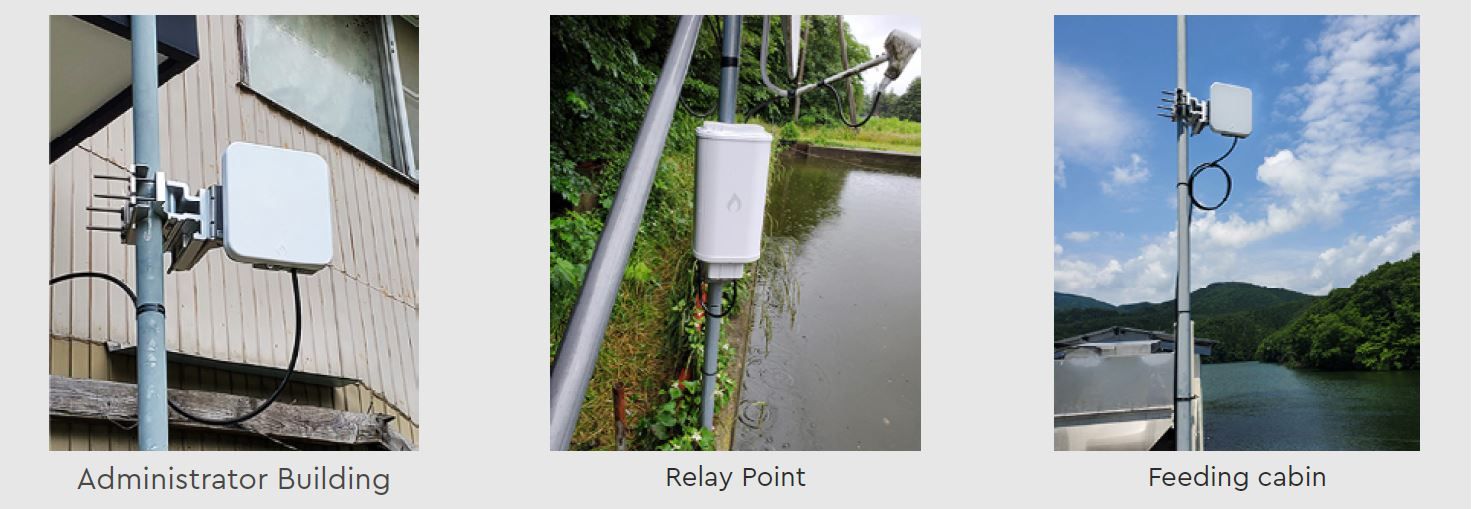OVERVIEW
NIPPON TELEGRAPH AND TELEPHONE EAST CORPORATION (NTT East) collaborated with BeMap, an IgniteNet partner in Tokyo, to provide the wireless transmission device MetroLinq using 60GHz band (WiGig) for the Environment sensing Proof of Concept (PoC) of the carp breeding business in Koriyama City, Fukushima prefecture in Japan.
THE SOLUTION

There is around 130 meters distance between the Optical Network Unit (ONU) of the administrator building and the water quality sensor for the ponds for carp breeding. Therefore, it was difficult to prepare the communication environment to send sensor data to the Internet. NTT East extended the network between these with the MetroLinq™ 2.5G 60 beamforming to use wireless connection. However, to install the equipment, due to the large number of trees grow from the building on the straight line of the pond, the attenuation of radio waves by the moisture of the trees became a problem.

Therefore, NTT East installed MetroLinq™ 10G Tri-Band Omni as a repeating device in a place where both buildings and the culture pond can be seen, and secured a route that circumvents trees (Figure 1).
The MetroLinq™ series is a license-free wireless transmission device that uses the ISM band 60 GHz, 5 GHz, and 2.4 GHz. The ISM band is a frequency band for general use in the industrial, scientific and medical fields. As a result, it will be possible to extend a gigabit-class broadband network to the suburbs where optical fiber laying is difficult. By using a 60GHz band and a large-diameter parabolic antenna, it can be achieved Reach 1 Gbps or more transmission speed even when the distance between the antennas is 1 km (Figure 2).

The MetroLinq™ 2.5G 60 beamforming sector and MetroLinq™ 10G Tri-Band Omni correspond to multipoint communication (PTMP: Point To Multi-Point). The MetroLinq™ 2.5G 60 beamforming sector is the wireless transmission device with a built-in sector antenna that covers an aperture angle of 120 °. It can be connected up to 12 units of MetroLinq™ series. In addition, MetroLinq™ 10G Tri-Band Omni can cover all directions with one unit that has three build in sector antennas with an aperture angle of 120 °, allowing up to 36 connections (Figure 3).
